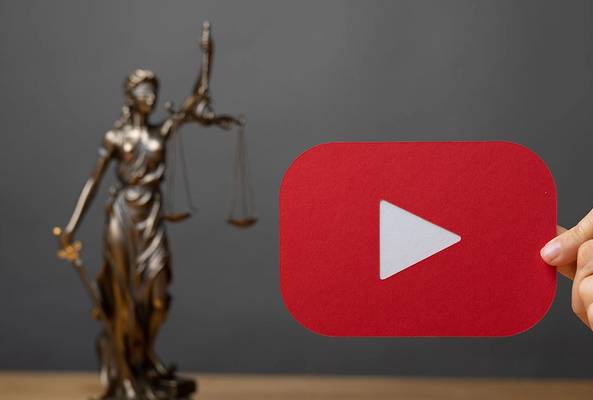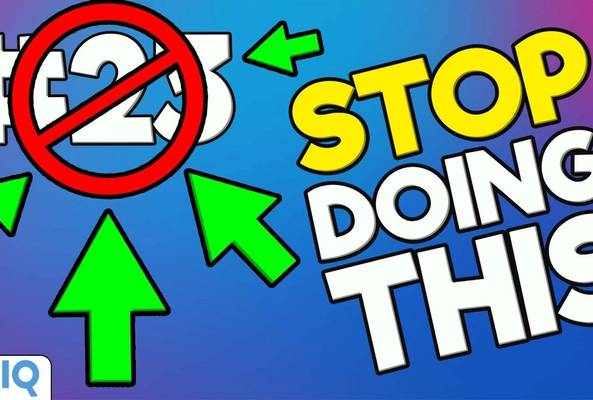Rob é o máximo
YouTube Settings You NEED to Know

I've got a question for you. What are all of the unique things you create for every single video, whether it be thumbnails, titles, descriptions, and tags? And the reason I ask you that is because some things you probably never change when you upload your videos and are always working in the background. But are they working smartly for you?
YouTube Default Uploads: Check Your Settings!
When you are logged into YouTube, you should see your channel logo in the top right-hand corner of most YouTube screens. We're going to start with something you should all review every couple of months and those are your upload defaults. Click on Settings in the left hand navigation bar and then, choose Upload defaults. When you begin the process of uploading a video to YouTube, elements of that upload will be pre-populated with what's currently in your Uploads default fields.
Starting with a title, it's probably best to leave this one blank as each title should be keyword specific and emotionally relevant to the video you upload. But if you are an educational or how-to channel, there may be specific phrases you want to include here.
On the other hand, you're description is where you want to pre-populate some stuff. Firstly, we have a top paragraph here that indicates the viewable description preview when people are scrolling through YouTube. It's a second opportunity to include keywords and grab the viewer’s attention. Imagine you are writing an old school tweet with 140 characters. Make it as compelling as possible.
Now, underneath all of this stuff you write about each video upload, you should also include new viewer information, such as who you are, what you do on YouTube, answers to common questions about your channel, links to whatever is important to you, and hashtags at the very bottom of the video description if you intend to use them.
A question you may be asking is, how do I use hashtags and should I be using hashtags on YouTube? Well, we do have a useful video that covers that topic and you can check it out here. And of course, always set you videos to ‘Private’ or at the very least, ‘Unlisted’, so that YouTube has a chance to process it properly, including giving warnings about monetization and so that you can set it to ‘Public’ at the exact time you want it to go live.
There are three tabs at the top of the Upload defaults screen, the second one being Extras and featuring tags and ad placement. Much like the title and description, your tags should be very specific to each uploaded video. We've got a couple of very broad default ones here and we usually delete as appropriate per video. And of course, once you have vidIQ installed, you will be offered hundreds of tag and keyword suggestions to help optimize your videos along with loads of other tools, too!
YouTube Monetization Settings
if your channel is monetized, you’ll want to make sure you are serving up ads on your content that maximize your potential earnings. Imagine if you've uploaded 50 videos with default settings that haven't been set correctly - that's a lot of potential revenue down the drain.
Now, I'm not suggesting you stick as many adverts as possible on your videos, but, consider this. If you make longer videos, of say, 15 to 30 minutes or more and you have high audience retention, say, 70 to 80%, I think that gives you permission to put adverts in the middle of your videos. After all, you deserve that little bit of extra income.
YouTube Advanced Settings: What to Update
One more tab to look at now and that's the Advanced section. Unless you're happy for people to use your content for free, make sure your videos are set to the Standard YouTube License.
The ‘Category’ drop down can help you to advertise as much of your content to the correct target audience. And it just so happens we've got a dedicated video on YouTube categories you can check out for more information:
The ‘Video Language’ option helps YouTube to share the correct language captions to the right viewers.
Caption certification only applies to videos that have been broadcast on U.S. television, and community contributions allows viewers to submit captions for your videos.
Finally, you can manage how comments are posted on your channel, whether you want to allow all comments, review each one, or disable them. If you are a channel that includes children in your content or appeals to a very young audience, you may want to check this every week to make sure YouTube haven't disabled this, although they should tell you in an email if they do.
How to Change the YouTube Settings of Published Videos
Making changes to your Upload default settings will affect all the videos you upload in the future. But what about those that are already on YouTube? Well, you can make changes to them on an individual basis.
From the new Studio Dashboard, click on the Videos link in the left-hand navigation bar to list all of your videos. Next, click on the video you want to adjust and on the first page, you will see the title, description, and tags you can change, along with many of our vidIQ tools. At the top of this screen, there is an Advanced tab where you can adjust all the other settings found in the default upload page, along with additional options, such as video location, age restriction, and even more monetization options.
Next on the list are channel keywords. To get to those, go to settings once again in the new studio and click on Channel. On the first tab labeled Basic, you will find channel keywords that apply to your whole channel, not just individual videos. Historically, channel keywords helps YouTube to understand the content and audience of your entire channel. Now, I say historically because if you were to ask me today how important channel tags are, I'm gonna be upfront with you. I have no idea. YouTube themselves have been stressing for a long time that video tags are no longer as important as they used to be and we did some tests on this video.
And if video tags aren't very important anymore, I would imagine channel tags are even less important. Take this as an example. We inserted this rather strange and unique tag into our channel keywords to see if we would be able to search and find our channel through that tag. We couldn't. The end result we did come up with was this channel. And I've gotta be honest, that kinda leaves me feeling a little woozy.
Next up is your YouTube branding watermark. To change this in the new studio, go to Settings and this time, click on Channel, and go to the final Branding tab. By setting this correctly with the right image, you can increase subscribers you get from this feature by over 500%. Yeah, you heard me right, 500%.
Going into Settings and then, Community will allow you to review a few things, including the management of your moderators for live streams. Blocking people from commenting on your videos and creating a list of words that, if picked up in comments, automatically send them to your held for review section.
When it comes to blocking words, obviously, you can use it for inappropriate language. But what you can also use it for is those damn annoying comments when people say, "Sub for sub. "Subscribe to my channel. "Hey, check out my channel."
Want To Get More Views on YouTube?
If you want to take your YouTube channel to the next level and get more views on YouTube then make sure to download vidIQ. Join over 1 million other users and use vidIQ to help you research YouTube, analyze videos, audit your own channel, and take actionable steps click here to install now!


